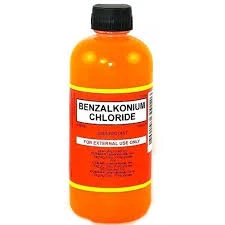poly aluminium chloride in wastewater treatment
The Role of Poly Aluminium Chloride in Wastewater Treatment
Introduction
In the face of increasing environmental pollution and the pressing need for sustainable water management practices, wastewater treatment has become a critical area of focus. One of the most effective coagulants used in this process is Poly Aluminium Chloride (PAC). This article explores the significance of PAC in wastewater treatment, its mechanism of action, advantages, and considerations for its application.
What is Poly Aluminium Chloride?
Poly Aluminium Chloride is a chemical compound that is synthesized from aluminum hydroxide and hydrochloric acid. It appears as a white solid and is highly soluble in water, making it suitable for various environmental applications. As a coagulant, PAC is used to remove suspended solids, colloids, and other impurities from wastewater, ensuring cleaner water is discharged into natural bodies.
Mechanism of Action
The coagulation process utilizing PAC involves several stages. When PAC is added to wastewater, it dissociates in water, releasing aluminum ions. These positively charged ions neutralize the negative charges on the surfaces of suspended particles, allowing them to aggregate. Once these particles clump together, they form larger flocs, which can then be easily removed through sedimentation or filtration. This mechanism underscores the efficiency of PAC in enhancing solid-liquid separation processes, ultimately improving water clarity and quality.
Advantages of Using PAC
1. High Efficiency PAC is known for its superior coagulation properties compared to traditional coagulants like alum. It requires lower doses to achieve the same level of treatment, making it a cost-effective alternative.
poly aluminium chloride in wastewater treatment

2. Wide pH Range PAC operates effectively across a broad pH range, which makes it versatile for various types of wastewater. Whether dealing with acidic or alkaline conditions, PAC can adapt to ensure optimal coagulation.
3. Reduced Sludge Production The use of PAC leads to the formation of denser and more easily separable sludge. This characteristic not only enhances the efficiency of the treatment process but also reduces the volume of sludge generated, lowering disposal costs and environmental impact.
4. Improved Water Quality The application of PAC can significantly enhance the removal efficiency of turbidity, organic matter, and pathogens from wastewater. The result is treated water that meets or exceeds regulatory standards for discharge or reuse.
5. Compatibility with Other Treatment Processes PAC can be effectively combined with other treatment methods, such as activated sludge processes and membrane filtration, to create a more comprehensive and effective treatment strategy.
Considerations for Application
While PAC presents numerous advantages, several factors should be taken into account when implementing it in wastewater treatment facilities. The correct dosage must be determined based on the characteristics of the wastewater being treated, as both overdosing and underdosing can lead to suboptimal results. Additionally, the presence of specific contaminants may require adjustments in PAC formulation or additional treatment steps to achieve the desired water quality.
Furthermore, operators should monitor residual aluminum levels in the treated water. Although PAC is generally considered safe, excessive aluminum concentrations can pose potential health risks. Continuous monitoring ensures compliance with health and environmental regulations.
Conclusion
Poly Aluminium Chloride's role in wastewater treatment is increasingly recognized as an effective and efficient solution for managing the challenges of water pollution. Its high coagulation performance, compatibility with various wastewater types, and ability to produce high-quality effluent make it an invaluable tool for modern wastewater management. By carefully considering its application and monitoring the treatment process, wastewater treatment facilities can harness the full potential of PAC, contributing to cleaner water and a healthier environment.
-
The Ultimate Guide to Flocculants: Transforming Water TreatmentNewsNov.01,2024
-
Improve Your Water Treatment Solutions with PolyacrylamideNewsNov.01,2024
-
Enhance Your Water TreatmentNewsNov.01,2024
-
Empower You to Achieve the Highest Standards of Water QualityNewsNov.01,2024
-
Effective Scale InhibitorsNewsNov.01,2024
-
Discover the Power of Poly Aluminum Chloride in Water TreatmentNewsNov.01,2024





